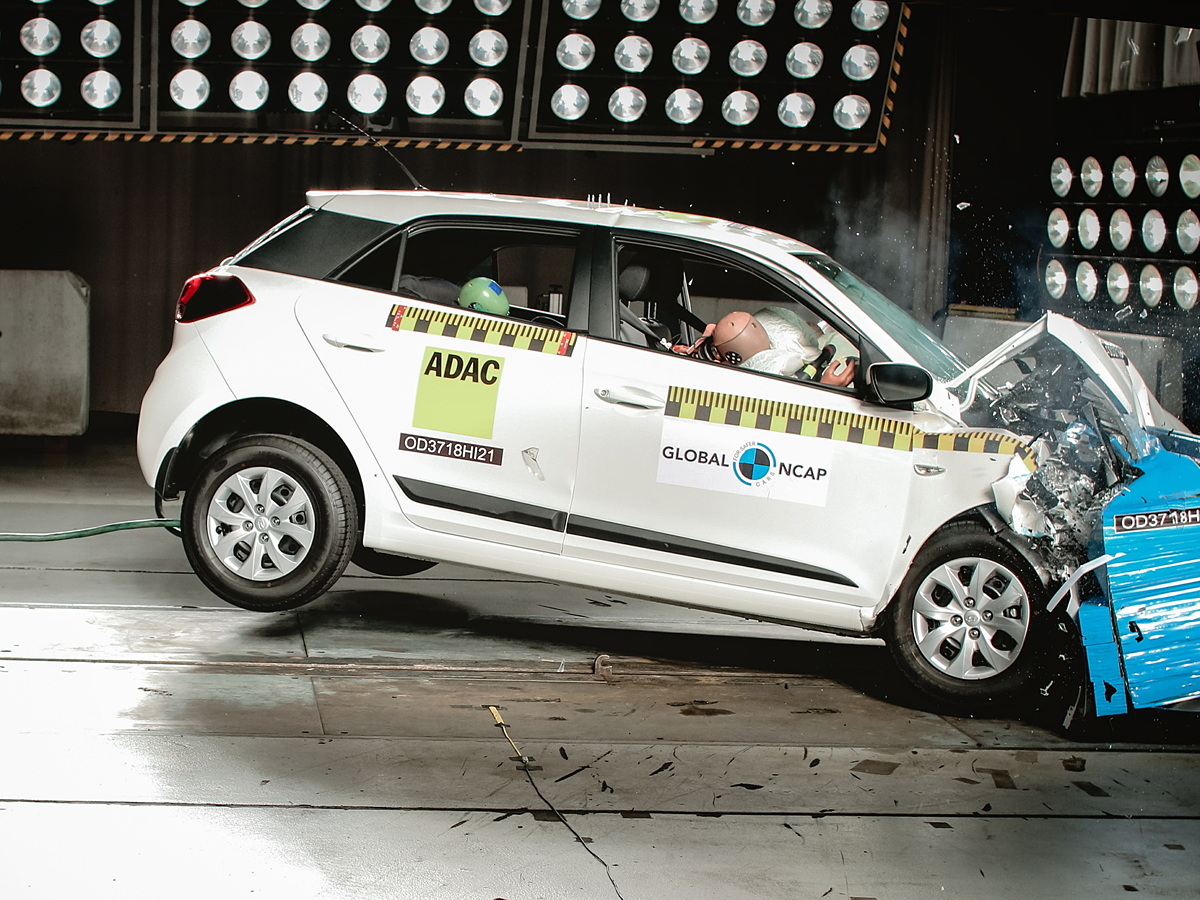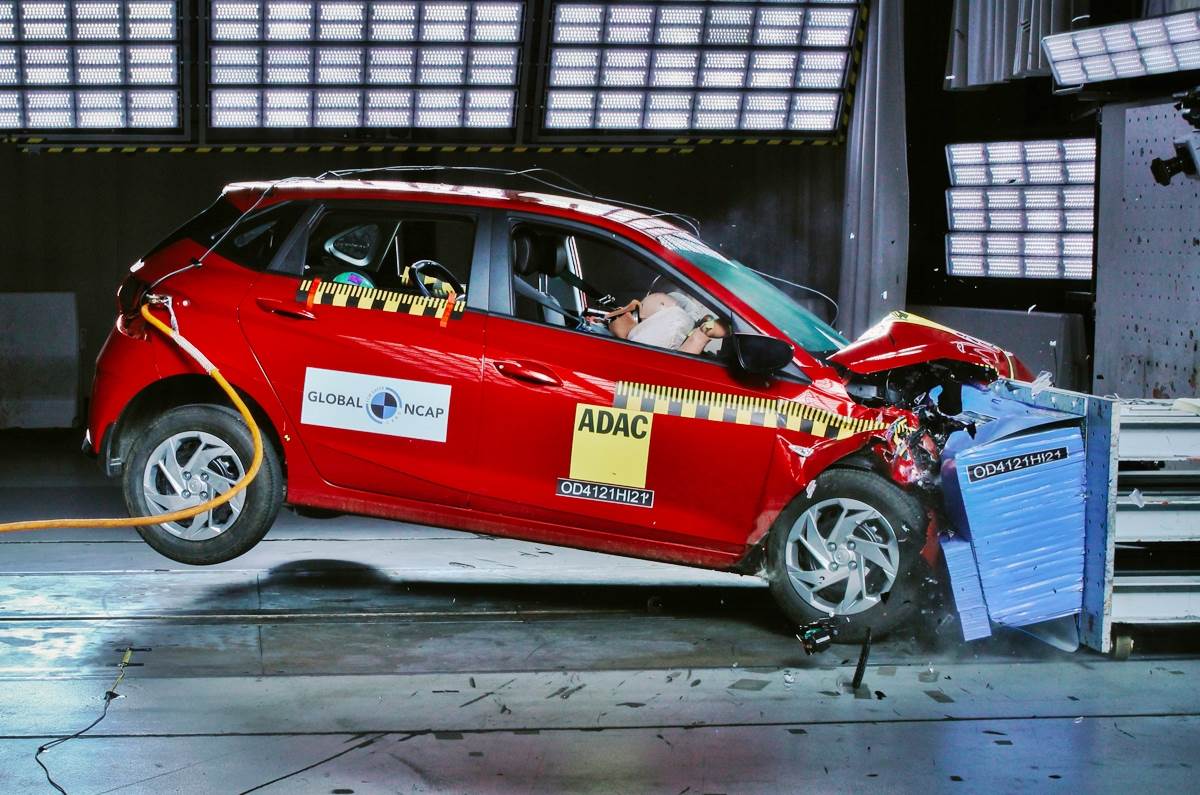Introduction: The Crucial Role Of Safety Ratings In Car Selection
Embarking On The Journey Of Selecting A New Car Involves Considering Various Factors, With Safety Being Paramount. One Key Aspect Is The NCAP (New Car Assessment Program) Rating, A Comprehensive Evaluation That Provides Insights Into A Vehicle’s Safety Features And Crashworthiness. In This Guide, We’ll Delve Into The Specific NCAP Rating Of The Hyundai I20, Exploring Its Safety Features, Crash Test Results, And The Significance Of These Findings For Potential Car Buyers.
Looking for a hatchback that boasts style, practicality and comfort? Look no further than the Hyundai i20! This sporty hatchback is stylish, fuel-efficient and comes with a host of safety features to ensure a seamless driving experience for you and your family.
This car comes with two engine options: a 1.2L petrol engine and a 1.0 l Turbo GDi petrol 7-speed DCT variant, the i20 N Line, that is a treat for auto enthusiasts. Promising an effortless blend of fuel economy, performance and a three-star Global NCAP safety rating, the Hyundai i20 is a popular car in the Indian market.
So, fasten your seatbelts and read on as we discuss what makes the Hyundai i20 an ideal choice for people looking to purchase a secure and fun to drive hatchback.
Understanding NCAP Ratings: A Foundation For Informed Car Purchases
Decoding NCAP: The Essence Of New Car Assessment Programs
Delve Into The Fundamental Concepts Of NCAP, Understanding How These Programs Evaluate And Rate The Safety Features Of New Vehicles. Explore The Criteria Used In The Assessment Process And How The Results Impact Consumers’ Decisions.
The Importance Of Safety Ratings: Prioritizing Passenger Well-Being*
Explore Why Safety Ratings Play A Pivotal Role In The Decision-Making Process When Purchasing A New Car. Understand How These Ratings Provide Consumers With Valuable Information About A Vehicle’s Safety Performance.
Hyundai I20 Overview: A Compact Car With A Focus On Safety

Introduction To The Hyundai I20: A Compact Contender*
Provide An Introduction To The Hyundai I20, Highlighting Its Position In The Compact Car Segment. Explore Key Features That Make The I20 A Popular Choice Among Consumers.
Safety-Centric Design: Integrating Advanced Technologies*
Delve Into Hyundai’s Commitment To Safety, Exploring How The I20 Incorporates Advanced Technologies And Design Elements To Enhance Occupant Protection And Overall Safety.
The NCAP Testing Process: Rigorous Assessments For Robust Results
Crash Test Scenarios: Simulating Real-World Situations*
Explore The Various Crash Test Scenarios Employed During The NCAP Evaluation Process. Understand How These Simulations Replicate Real-World Situations To Assess A Vehicle’s Performance Under Different Impact Conditions.
Evaluation Criteria: A Comprehensive Analysis Of Safety Features*
Delve Into The Specific Criteria Used To Evaluate Safety Features During NCAP Testing. Explore How Factors Such As Crash Avoidance Technologies, Structural Integrity, And Occupant Protection Contribute To The Overall Safety Rating.
Hyundai I20 NCAP Rating: Breaking Down The Scores

Overall Rating: A Snapshot Of Safety Performance*
Explore The Overall NCAP Rating Assigned To The Hyundai I20. Understand How This Comprehensive Score Encapsulates The Vehicle’s Performance Across Various Safety Parameters.
Individual Test Results: Analyzing Crash Test Outcomes*
Delve Into The Specific Results Of Individual Crash Tests Conducted As Part Of The NCAP Assessment. Analyze How The Hyundai I20 Performed In Frontal, Side, And Rear Impact Scenarios.
Structural Integrity: The Foundation Of Occupant Safety
Chassis Design: Strengthening The Core For Impact Resilience*
Explore The Chassis Design Of The Hyundai I20, Focusing On How The Structural Integrity Of The Vehicle’s Core Contributes To Impact Resilience And Occupant Safety.
Crumple Zones And Impact Absorption: Enhancing Crashworthiness*
Delve Into The Concept Of Crumple Zones And How They Play A Crucial Role In Absorbing Impact Energy During A Collision, Minimizing The Forces Transmitted To Occupants.
Occupant Protection: Prioritizing Safety Inside The Hyundai I20

Airbag Systems: Rapid Response For Enhanced Protection*
Explore The Airbag Systems Integrated Into The Hyundai I20, Understanding How These Safety Features Provide Rapid Response And Additional Protection For Occupants During A Collision.
Seatbelt Technologies: Reinforcing The Last Line Of Defense*
Delve Into Seatbelt Technologies Employed In The Hyundai I20, Emphasizing Their Role As The Last Line Of Defense In Securing Occupants And Preventing Injury During A Crash.
Crash Avoidance Technologies: Proactive Safety Measures
Electronic Stability Control (ESC): Mitigating Skids And Loss Of Control*
Explore The Role Of Electronic Stability Control (ESC) In The Hyundai I20, Understanding How This Technology Helps Mitigate Skids And Loss Of Control, Reducing The Risk Of Accidents.
Collision Warning Systems: Alerting Drivers To Impending Dangers*
Delve Into Collision Warning Systems Integrated Into The Hyundai I20, Exploring How These Features Alert Drivers To Potential Dangers, Providing Crucial Seconds To React And Avoid A Collision.
Pedestrian Safety: Extending The Circle Of Protection

Pedestrian Impact Mitigation: Designing Cars With Pedestrians In Mind*
Explore The Pedestrian Safety Features Incorporated Into The Hyundai I20. Understand How The Design Elements Of The Car Contribute To Mitigating The Impact On Pedestrians In The Event Of A Collision.
Emergency Braking Systems: An Additional Layer Of Pedestrian Protection*
Delve Into Emergency Braking Systems Designed To Enhance Pedestrian Safety. Explore How These Systems Can Automatically Apply The Brakes To Prevent Or Mitigate A Collision With Pedestrians.
Child Occupant Protection: Prioritizing The Youngest Passengers
Child Restraint Systems: Ensuring Safe Travels For Young Passengers*
Explore The Child Occupant Protection Features Of The Hyundai I20. Understand How The Vehicle Accommodates Child Restraint Systems And Provides A Secure Environment For The Youngest Passengers.
ISOFIX Mounting Points: Streamlining Child Seat Installation*
Delve Into ISOFIX Mounting Points In The Hyundai I20, Understanding How These Standardized Attachment Points Simplify The Installation Of Child Seats, Enhancing Overall Child Occupant Protection.
Post-Crash Safety Features: Beyond The Initial Impact
Automatic Emergency Call Systems: Rapid Assistance After A Collision*
Explore Post-Crash Safety Features Integrated Into The Hyundai I20, Including Automatic Emergency Call Systems. Understand How These Systems Facilitate Rapid Assistance And Emergency Response After A Collision.
Impact-Responsive Door Unlock: Streamlining Exit In Emergency Situations*
Delve Into Impact-Responsive Door Unlock Features, Understanding How These Systems Streamline The Exit Process For Occupants In Emergency Situations, Enhancing Overall Post-Crash Safety.
Conclusion: Informed Choices For A Safer Driving Experience
This Comprehensive Guide Has Navigated Through The Critical Aspects Of The Hyundai I20 NCAP Rating, Shedding Light On Its Safety Features, Crash Test Results, And The Significance Of These Findings For Potential Car Buyers. As You Consider Your Options For A New Car, May This Guide Empower You With The Knowledge Needed To Make An Informed Decision, Prioritizing Safety And Ensuring A Secure Driving Experience On The Road.

